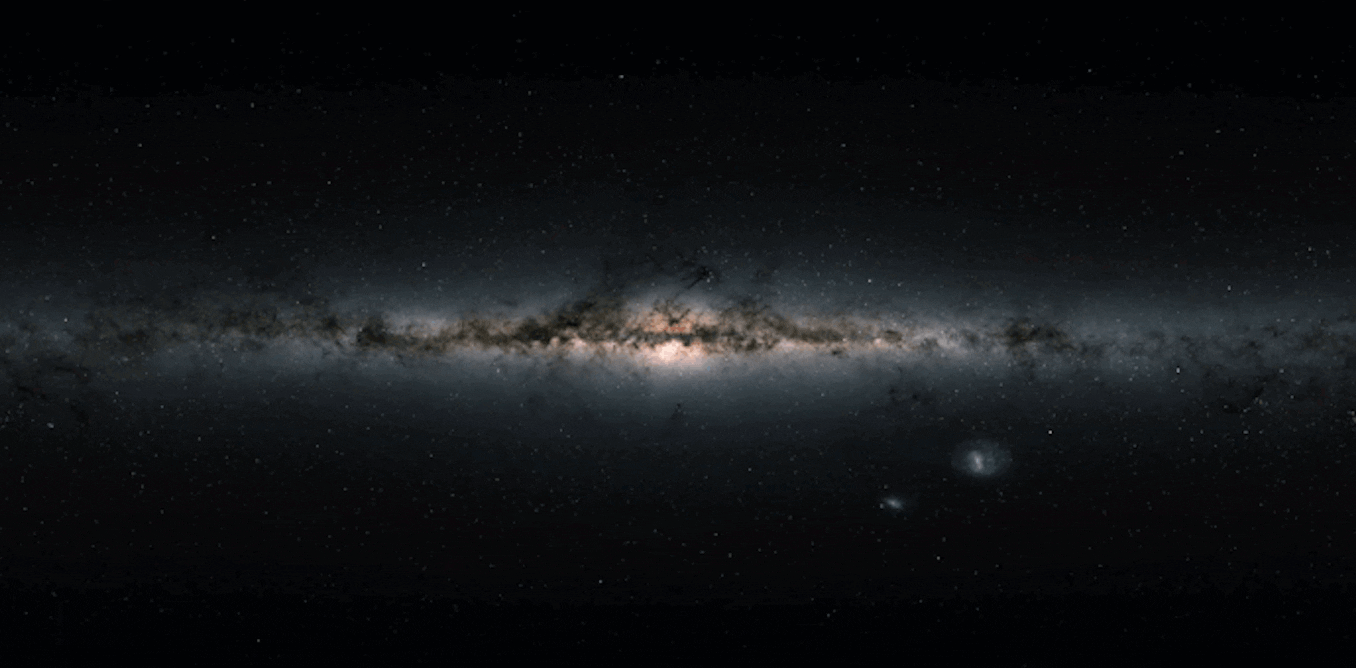Science
Astronomers Revolutionize Planet Discovery: The Search for Earth Twins

The discovery of 51 Pegasi b on October 6, 1995, marked a significant milestone in astronomy. Swiss astronomers Michel Mayor and his PhD student Didier Queloz announced the detection of this gas giant orbiting a star outside our solar system, fundamentally altering our understanding of planetary systems. Located approximately 50 light years away in the constellation Pegasus, 51 Pegasi b was unlike any known planet, completing an orbit in just over four days and experiencing extreme temperatures exceeding 1,000°C.
The breakthrough came through the use of the Elodie spectrograph, installed at the Haute-Provence observatory in France. The device analyzed starlight, revealing a spectrum with dark lines, akin to a “stellar barcode.” Mayor and Queloz observed the spectral shifts of 51 Pegasi, indicating a gravitational influence from an unseen companion star. After rigorous validation, their findings were published in the journal Nature, igniting a wave of excitement and skepticism in the scientific community about the existence of such a planet.
The initial reactions were mixed, as many scientists struggled to reconcile the existence of a gas giant so close to its star. The term “hot Jupiter” eventually emerged to describe this new class of exoplanets, which defied previous theories of planetary formation. Within weeks, other research teams confirmed the discovery, leading to a revolution in astronomy.
Expanding the Exoplanet Catalog
Since that groundbreaking announcement, astronomers have identified over 6,000 exoplanets and candidates, demonstrating a staggering variety of worlds. From ultra-hot Jupiters to rocky planets in tight orbits, the catalog of exoplanets has expanded dramatically. The discoveries have reshaped our understanding of planetary systems, suggesting that most stars may host their own planets.
The quest for Earth-like planets continues to motivate astronomers. The hope is to find a planet that closely resembles Earth in size, mass, and temperature. This endeavor involves international collaborations, such as the Harps-N spectrograph project based on the Canary Island of La Palma. This sophisticated instrument allows researchers to analyze starlight, searching for signals that indicate the presence of planets.
The history of exoplanet research is rich, dating back to philosophical conjectures of ancient Greeks. Epicurus speculated on the existence of infinite worlds, while Aristotle argued for a geocentric universe. For centuries, the notion of planets beyond our solar system remained speculative until advancements in technology brought new possibilities.
Methods of Detection
Astronomers employ various methods to detect exoplanets, primarily the radial velocity method and the transit method. The radial velocity technique, which Mayor and Queloz used, measures the wobble of stars caused by orbiting planets. This method has evolved, with modern spectrographs like Harps-N achieving impressive precision in measuring star movements.
On the other hand, the transit method involves observing the dimming of a star’s light as a planet passes in front of it. This technique has led to the discovery of many exoplanets, including the notable HD209458b, identified by Canadian astronomer David Charbonneau in 1999. By analyzing the light curves, astronomers can not only confirm the presence of a planet but also estimate its size.
Despite the advancements, the search for a true Earth twin remains challenging. Current detection methods are still limited, particularly for planets that might resemble Earth. The existence of a planet with similar characteristics and conditions is the holy grail for many astronomers.
The ongoing search for Earth-like exoplanets is not just about cataloging new worlds. It represents a profound inquiry into our place in the universe and the possibilities for life beyond Earth. As technology progresses, the future of exoplanet research holds the promise of revealing more about the cosmos and potentially identifying worlds that could host life.
As the scientific community reflects on the impact of Mayor and Queloz’s discovery, the focus shifts to future initiatives, such as the upcoming Harps3 project, which aims to enhance our capabilities in finding Earth-like planets. The next decade of exploration could bring humanity closer to answering one of its most profound questions: Are we alone in the universe?
-

 World19 hours ago
World19 hours agoCoronation Street’s Shocking Murder Twist Reveals Family Secrets
-

 Entertainment4 months ago
Entertainment4 months agoKate Garraway Sells £2 Million Home Amid Financial Struggles
-

 Entertainment3 months ago
Entertainment3 months agoAnn Ming Reflects on ITV’s ‘I Fought the Law’ Drama
-

 Health3 months ago
Health3 months agoKatie Price Faces New Health Concerns After Cancer Symptoms Resurface
-

 Entertainment3 weeks ago
Entertainment3 weeks agoCoronation Street Fans React as Todd Faces Heartbreaking Choice
-

 World4 days ago
World4 days agoKevin Sinfield Exceeds Fundraising Goal Ahead of Final Marathons
-

 Entertainment3 months ago
Entertainment3 months agoCoronation Street’s Carl Webster Faces Trouble with New Affairs
-

 Entertainment4 days ago
Entertainment4 days agoTwo Stars Evicted from I’m A Celebrity Just Days Before Finale
-

 World3 weeks ago
World3 weeks agoBailey Announces Heartbreaking Split from Rebecca After Reunion
-

 Entertainment3 months ago
Entertainment3 months agoWhere is Tinder Swindler Simon Leviev? Latest Updates Revealed
-

 Entertainment4 months ago
Entertainment4 months agoMarkiplier Addresses AI Controversy During Livestream Response
-

 Science2 months ago
Science2 months agoBrian Cox Addresses Claims of Alien Probe in 3I/ATLAS Discovery





















